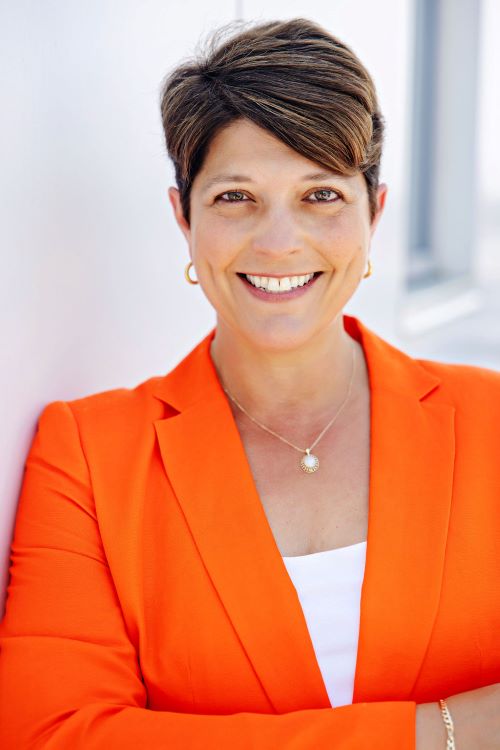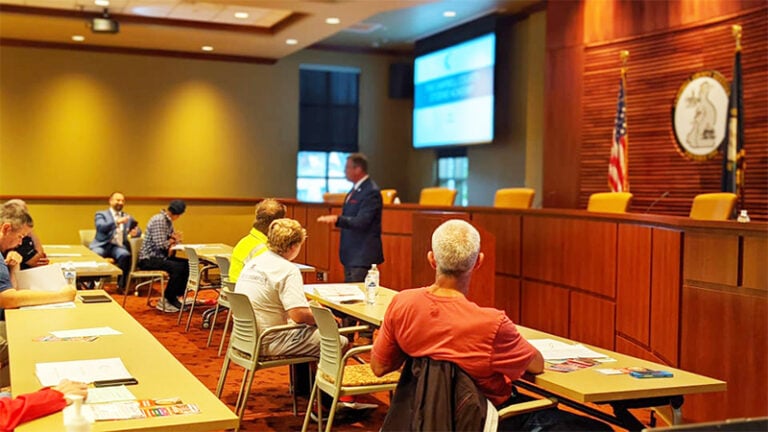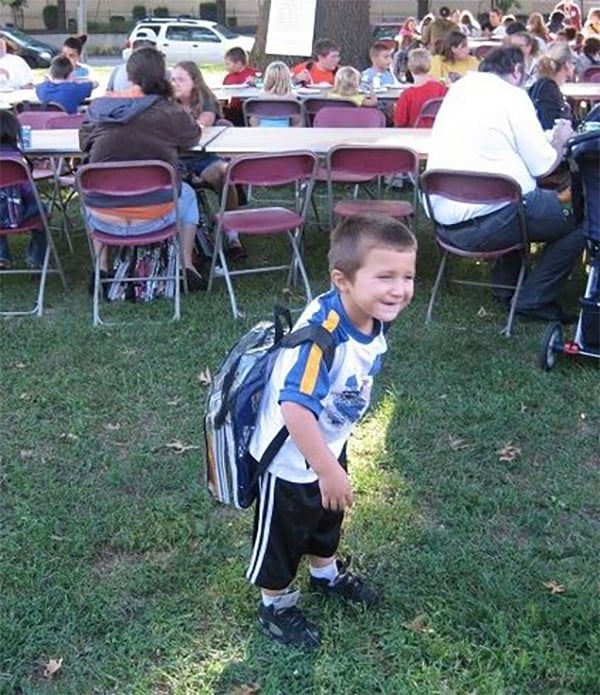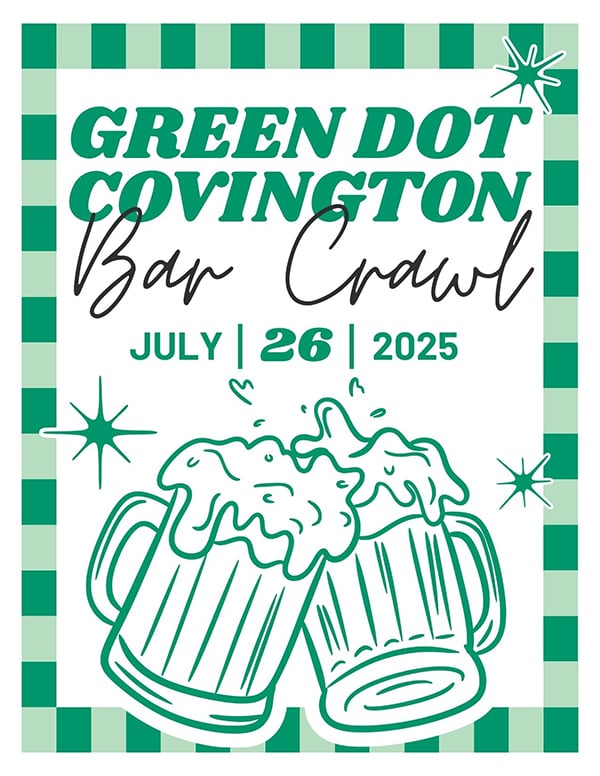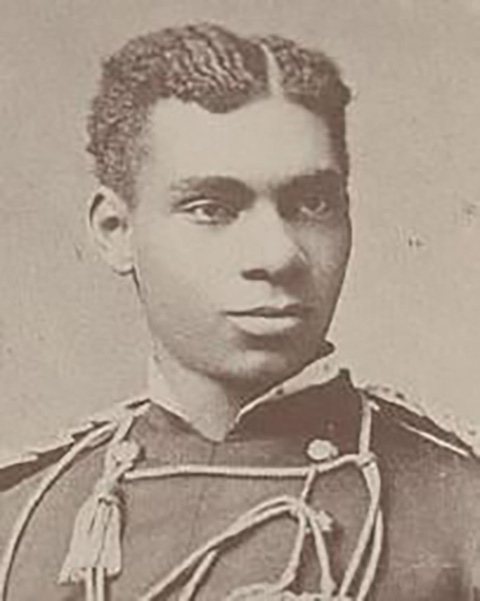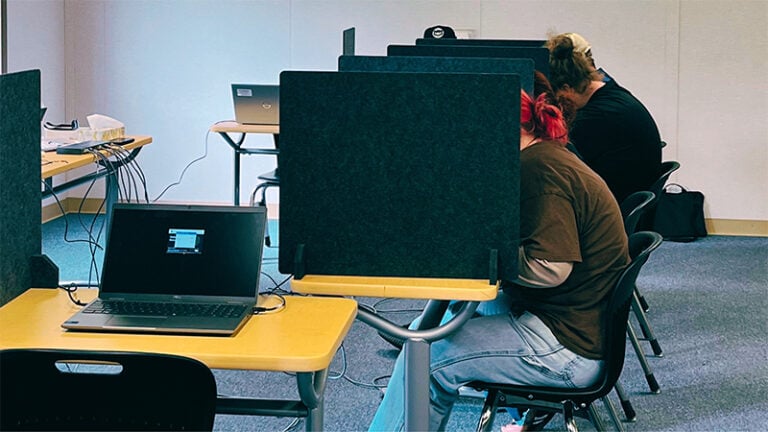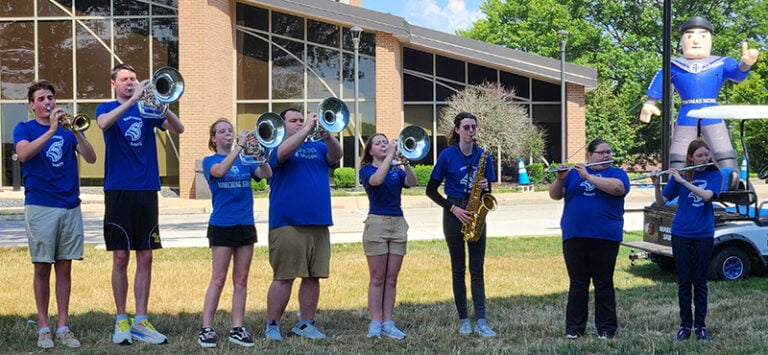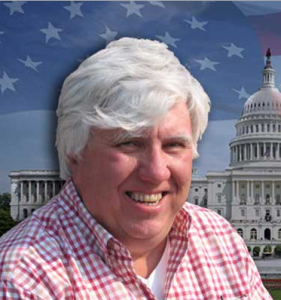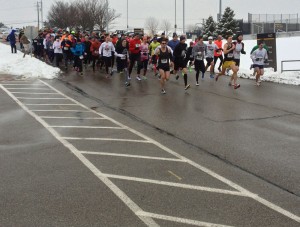
I’ll admit this up front: I have a bias about the Annual Valentine’s Day 2-Mile Labor of Love Run that’s put on by the Runners’ Club of Greater Cincinnati.
It’s the first race I ever signed up for and participated in. It was some five months after I started running, and I figured I could complete the race without faltering or falling. I even persuaded my daughter, Corey Long, to sign up with me, and we entered the father-daughter couples division.
I finished that 2011 race with a time of 18:18, the fastest pace I had ever maintained. A few years later, Corey and I won the father-daughter division, although last year, we dropped to seventh out of the seven teams. So this year, we are switching to a combined age group division, and will compete in the 80-99 range. I’m bringing the age; Corey’s got the speed.
And we’re not the only people lacing up the running shoes and hitting the road this Sunday for the 35th annual race, being held at Northern Kentucky University. Hundreds of people will be there, as the race has become one of the more popular of its kind in the area. It begins at noon, and you can register the day of the race.
It’s an easy race — just two short miles. But it’s a hard race — through the concrete and asphalt hills of NKU. And it attracts the local racing elite, who will speed through the course in around 10 minutes — a blistering 5-minute-per-mile pace.
“I have been involved as a volunteer since 2003, and it has always been a popular race,” said Todd Hofacre, president of the Runners’ Club. “In the past, college runners from Thomas More or NKU would run in it, so it always had fast runners. Fast runners attract more fast runners.”
Indeed. Last year — when runners were warned about possible snow or ice on the course — Darryl Parks of Frankfort took first place with a 10:44 time on a cloudy, windy, and cold day. The year before, on a much warmer day, Kelly Rathcamp of Chillicothe, Ohio, won in 10:35. In 2012, the winning time was 9:55. In 2010, six runners broke the 10-minute mark.
“The elite runners like it since they do not get to race at the two-mile distance much, except in track,” Hofacre said. “The fun runner likes it since the two mile is a shorter distance than the 5K, and they feel like they can complete it successfully before attempting the 5K.”
There is plenty for the fun runners: In addition to various parent-child combinations, the couple’s categories include married and blind date, in which runners are randomly matched (“don’t have a partner, let Cupid find you one”). There’s the “ball-and-chain” categories, in which people must run while tethered to each other: the male/male Felix & Oscar, or the female/female Thelma & Louise divisions.
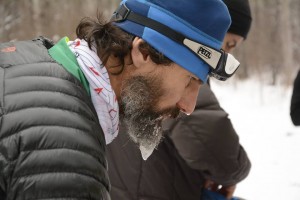
All this started in the 1980s when the Runners’ Club decided a race in February was a good fundraising idea because there were so few at the time. (There are several a week these days.) Hofacre said a fellow named Ed Spiller suggested a Valentine’s Day race. The club contacted a bar on Pete Rose Way to help sponsor it, and the race was on.
It began as a 2.5 mile race downtown that attracted close to 800 runners. It kept going for a decade before the Runners’ Club started focusing on other races. Then in the mid-1990s, Mike Moyer became the cross-country coach at Thomas More College and helped bring it back as a fundraiser for his team. It was held at Thomas More until 2001, when it moved to NKU. Now, NKU’s cross-country team helps keep the race going, by offering race day registration, setting up the course, and other support, Hofacre said. “If it were not for (its) involvement, I doubt that the club could keep this race going.”
And why is it two miles? Well, duh. It’s a couple’s race.
***
From two miles to 135 miles. Some people like shorter races. Harvey Lewis likes his longer.
Harvey, a Cincinnati school teacher and part-time coach for the Edgewood-based Tri State Running Co.’s training groups, is one of the top ultra-runners in the world. This summer, he won the Badwater 135, a 135-mile foot race, in July, through Death Valley or the desert mountains in California, where the temperatures reach well past 100 degrees. Last week, he took on the winter version, the Arrowhead 135.
That’s 135 miles on a trail in northern Minnesota, starting in International Falls. You’ve heard of International Falls, right? That’s the place the weather people point to when they want to show you the coldest place in the continental United States. And in this race, runners were on their own: They had to bring all their food, water, and supplies — including a camp stove to cook or warm their food, and the fuel need for the stove. (Remember, they are out in the northern Minnesota wilderness in January.) To carry the items, runners dragged a sled behind them.
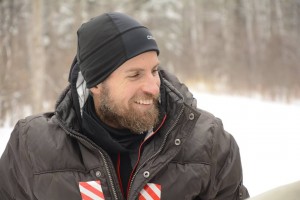
Now, Harvey’s a competitive guy. Determined to win Badwater, he went flying out of the gate at a sub 9-minute per mile pace. He raced down one of the two mountains on the course, in the dark, on loose gravel, at a 7-minute per mile clip. He finished that race in less than 24 hours.
He was running his first Arrowhead. The winner this year, Marcus Berggren of Sweden, finished in 34 hours, 20 minutes, smashing the previous record by just under three hours. Now, if you look at the race results, you’ll find that Harvey tied for second place with Jan Kriska, a Slovakian native who now lives in South Carolina.
The finish was not an accident.
But I’ll let Harvey tell this part of the story, as he posted on Facebook shortly after finishing the race: “Even better than winning was tying for second place in the Arrowhead 135 alongside my new friend and competitor, Jan Kriska, and sharing in an epic adventure together. He had tenacious spirit and refused to give up. We battled for hours and hours before calling a truce Monday evening. We ran so many miles and helped make each other better. In the end, neither of us would have got there as fast without the camaraderie, so we thought we would rather share second than race each other to the finish. When we saw another competitor approaching within 50 meters, we sprinted the final seven miles and finished well ahead of our expected finish.”
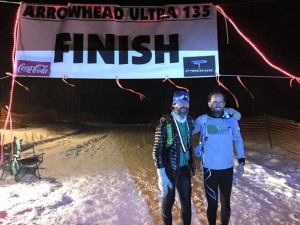
Tracey Outlaw, part of Harvey’s crew who helped him plan and train for the race, and shot some wonderful pictures of it, said the two men had never met before they found themselves running side-by-side.
“They ran the last 65 or so miles together after battling for a while, then … deciding (it was) better to work together than fight,” Outlaw told me. “Both helped each other out. At one point Jan could not see well (because of a) lack of vitamin A, so he followed Harvey’s light through the night. And Harvey fed off Jan’s energy. … With 25 miles to go at the last checkpoint, Harvey kept encouraging Jan, and walked until Jan caught up with him.
“The best part (was) the sprint they did together … when a runner approached within 50 meters, Harvey said, ‘Now we go,’ and he and Jan together sprinted to the end. … Harvey and Jan finished hand-in-hand together across the finish line. That is what makes these races so special. (It’s a) nice balance to being competitive and being human — proof you can do and be both.”
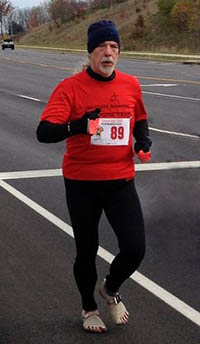
Paul Long writes weekly for the Tribune about running and runners. For his daily running stories, follow him at dailymile.com or on Twitter @Pogue57







